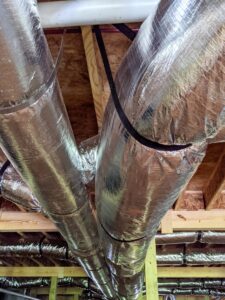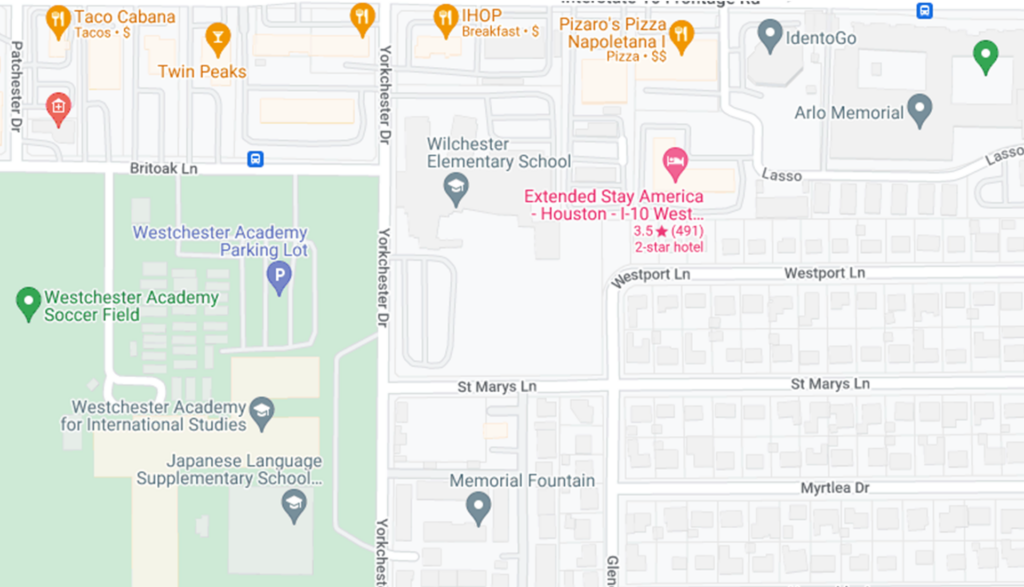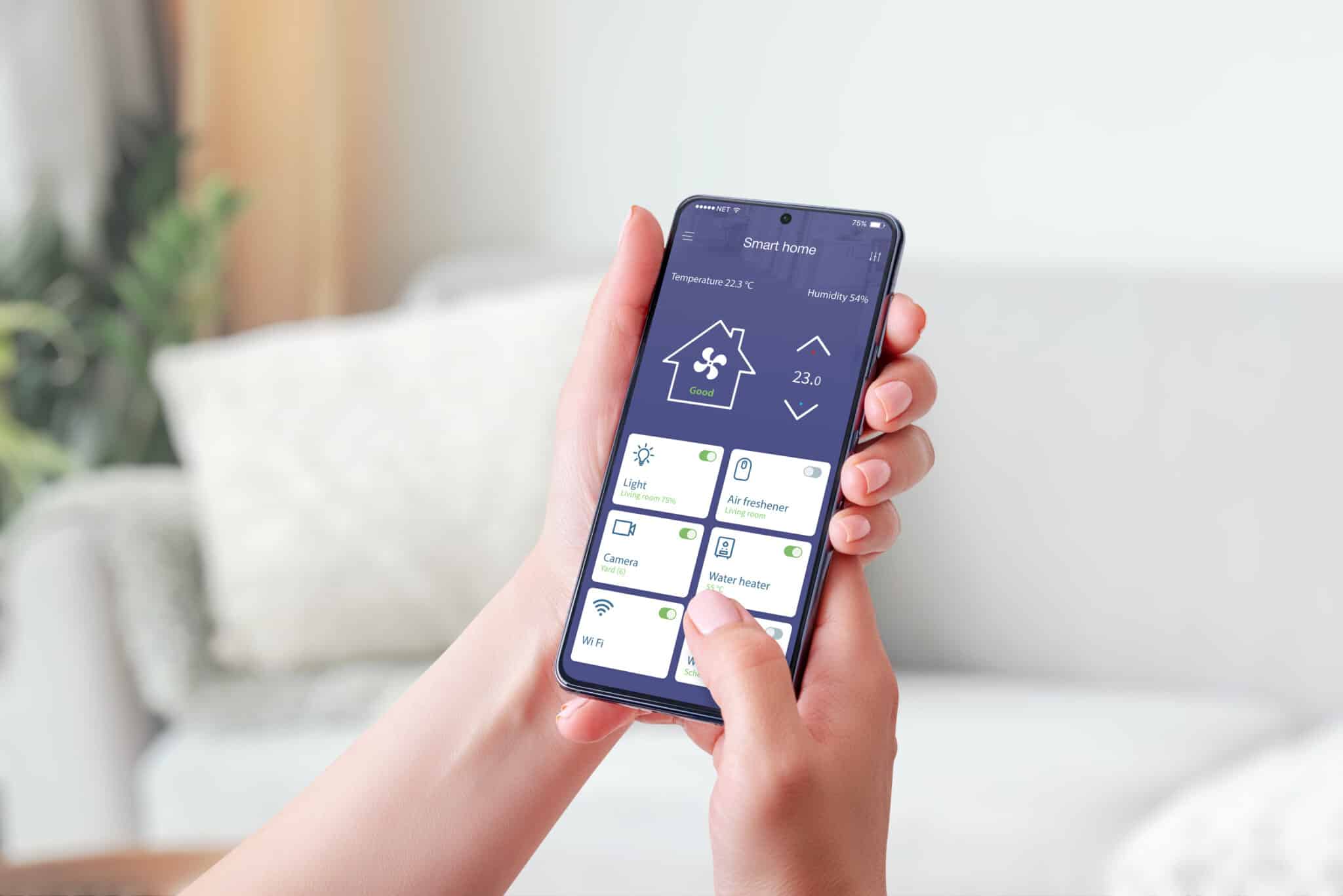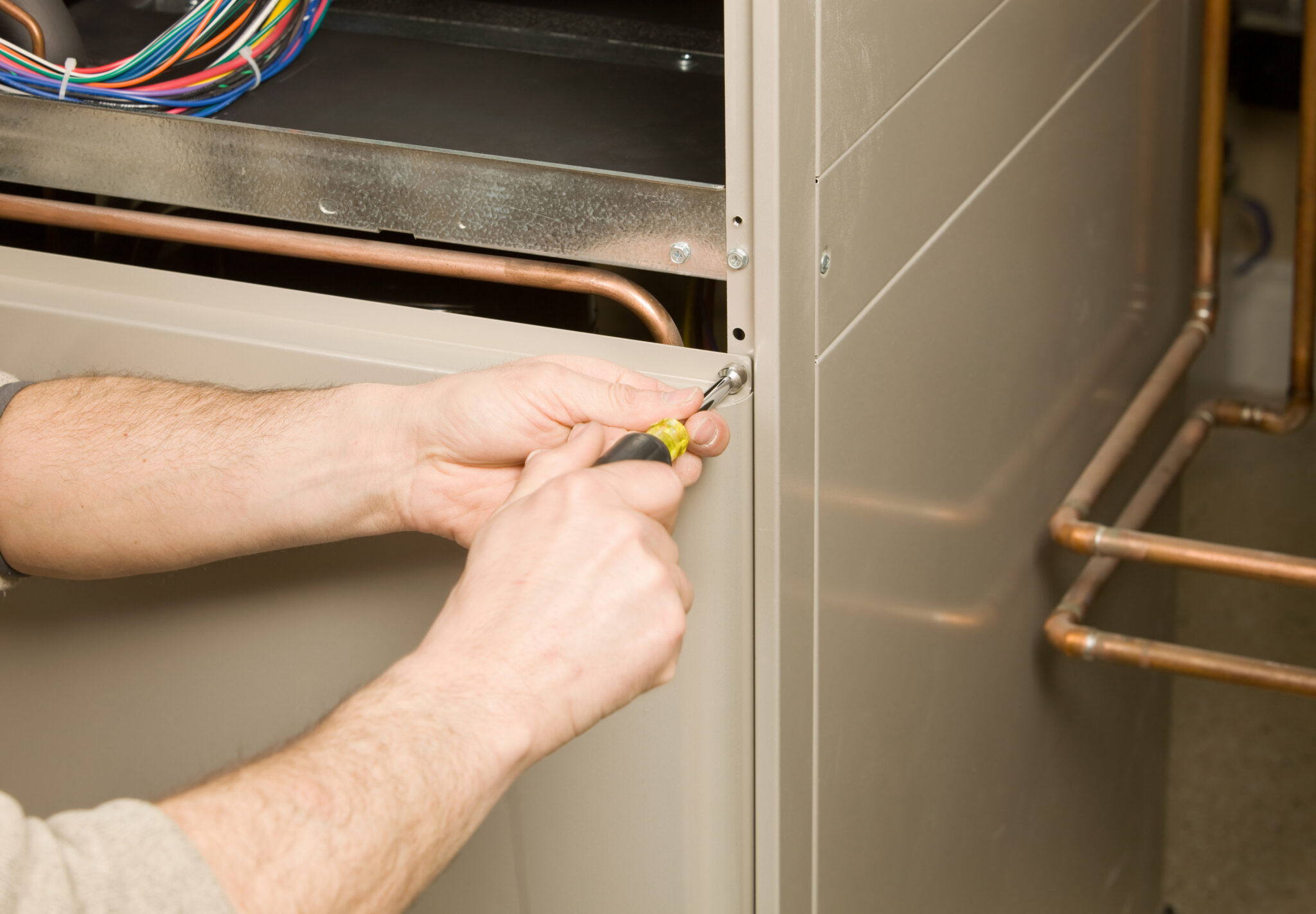Zoning systems are a breakthrough in modern home comfort, offering precise temperature control for every room in your house. By dividing your home into separate zones, each with its own thermostat, these systems eliminate uneven heating or cooling while maximizing efficiency. With zoning systems, you can finally say goodbye to the constant thermostat battles and enjoy tailored comfort for every family member.
The ability to control temperatures by zone not only ensures a more comfortable environment but also saves energy. Why heat or cool rooms that are not in use? For Fulshear, TX, homeowners preparing for December’s cooler days, zoning systems deliver the perfect balance between comfort and cost-effectiveness, ensuring you are cozy when it matters most.
Investing in a zoning system is not just about convenience; it is about creating a home that adapts to your lifestyle.
How Zoning Systems Work
Zoning systems transform how you manage comfort in your home by dividing it into multiple zones, each with independent temperature control. This system hinges on three vital components: individual thermostats, motorized dampers, and a centralized control panel. Together, these parts create a harmonious balance of precision and efficiency.
Each zone is equipped with its own thermostat, allowing specific temperature settings for that area. These thermostats communicate with the control panel, which acts as the command center. The control panel sends instructions to dampers installed within the ductwork. These dampers open or close depending on the airflow requirements of each zone, ensuring the right temperature is achieved in every space.
The beauty of zoning systems lies in their adaptability. You no longer need to overheat or overcool the entire house just to make one room comfortable. For instance, you can keep the family room at a cozy temperature while reducing energy use in unoccupied bedrooms. This precise distribution of airflow not only maximizes comfort but also prevents your HVAC system from working harder than necessary, ultimately extending its lifespan.
In Fulshear, TX, where December weather often brings chilly mornings and mild afternoons, zoning systems ensure each room feels just right. From keeping the kitchen cool during a holiday dinner to warming the living room for an evening movie, these systems cater to your family’s unique needs.
Benefits of Implementing Zoning Systems
Creating the perfect environment at home should not be a constant struggle with the thermostat. Dividing your living space into distinct zones, each with customized temperature control, provides the ultimate solution to uneven comfort and wasted energy. Zoning systems deliver transformative benefits that make them a must-have for modern homes.
Enhanced Comfort with Personalized Temperature Settings
Imagine every room in your home set to the perfect temperature—no compromises, no disagreements. Zoning allows each area to maintain its own climate, tailored to its use and occupants’ preferences. Bedrooms can stay cooler for restful sleep, while living rooms remain warm for cozy family gatherings. This level of control ensures a home that feels truly comfortable for everyone.
Energy Efficiency That Cuts Costs
One of the most convincing benefits is how efficiently zoning systems operate. By directing heating or cooling only to spaces that need it, you eliminate wasted energy. This targeted approach means lower utility bills without sacrificing comfort. Over time, the energy savings alone can make up for the cost of the system while reducing your carbon footprint.
Prolonged HVAC System Lifespan
Heating or cooling your entire house when only a few rooms are occupied puts unnecessary strain on your HVAC system. Zoning minimizes this workload by letting your unit work smarter, not harder. The reduced strain leads to fewer breakdowns and a longer lifespan for your equipment, saving you money on repairs and replacements.
Improved Indoor Air Quality for a Healthier Home
Better control over airflow means more than just comfort—it enhances the quality of the air you breathe. Zoning systems prevent hot and cold spots that can trap moisture, leading to mold and allergens. Balanced airflow keeps the air fresh and clean, promoting a healthier home environment for your family.
For homeowners in Fulshear, TX, December’s chilly mornings and cooler nights make now the perfect time to enjoy the benefits of a system that adapts to your lifestyle. Whether you are hosting holiday dinners, working from home, or relaxing with loved ones, zoning ensures your home is as comfortable as it is efficient.
Types of Zoning Systems
The choice of zoning system can dramatically impact the comfort, efficiency, and energy use of your home. Each type of system is designed to meet specific needs, offering flexibility for various home layouts and lifestyles. Here’s a closer look at the options to help you make an informed decision.
-
Single-Zone Systems
Simple yet effective, single-zone systems manage the temperature of your entire home through one thermostat. While they do not provide room-specific control, they are ideal for smaller homes or apartments where a single climate setting suffices. These systems reduce energy waste by streamlining airflow, offering an upgrade in efficiency over traditional HVAC setups.
-
Multi-Zone Systems
Multi-zone systems divide a home into multiple zones, each with its own thermostat and motorized dampers for airflow control. This setup is perfect for larger homes, multi-story layouts, or families with varying temperature preferences. Whether you want a cooler upstairs for restful sleep or a warmer living room for entertaining guests, multi-zone systems deliver customized comfort without energy overuse.
-
Variable Air Volume (VAV) Systems
VAV systems take zoning a step further by adjusting the volume of air delivered to each zone based on specific temperature requirements. Unlike traditional systems that operate in bursts, VAV systems modulate airflow for smooth, efficient temperature regulation. This design is especially effective for homes with open layouts or rooms that experience fluctuating temperature needs throughout the day.
-
Variable Refrigerant Flow (VRF) Systems
For unparalleled flexibility, VRF systems are the gold standard. These systems allow different zones to heat and cool simultaneously by varying the refrigerant flow to each area. Perfect for homes with unique temperature requirements—such as sunrooms, home offices, or high-traffic living spaces—VRF systems provide exceptional efficiency and adaptability.
Understanding the types of zoning systems ensures you choose a solution that meets both your comfort and energy-saving goals. For homeowners in Fulshear, TX, where December’s cooler weather makes efficient climate control crucial, selecting the right system can transform your home into a cozy and cost-effective retreat.
Is a Zoning System Right for Your Home?
Deciding if a zoning system is the perfect addition to your home requires a closer look at its unique design and your specific needs. These systems are designed to address uneven temperatures and improve energy efficiency, but how well they work depends on several key factors.
Home Size and Layout
Larger homes with multiple floors or expansive layouts often struggle with inconsistent temperatures. Zoning systems tackle this challenge by dividing your home into separate areas, each with its own thermostat. Whether it is a cozy bedroom upstairs or a sunlit living room downstairs, every zone can maintain its ideal temperature without overburdening the HVAC system. For smaller homes, a single-zone system may provide adequate comfort and savings, while multi-zone systems shine in more complex layouts.
Existing HVAC System Compatibility
Your current HVAC infrastructure plays a significant role in determining if zoning is right for you. Homes with modern ductwork often integrate zoning seamlessly. However, older systems or ductless setups may require adjustments or additional installations. Professional consultation is essential to ensure compatibility and to maximize the benefits of zoning in your home.
Suitability for Multi-Story Homes or Homes with Large Windows
If your home has multiple levels or large windows, you are likely familiar with temperature imbalances. Heat rising to the upper floors or cold drafts near windows can create discomfort. A zoning system solves these problems by allowing each area to maintain a separate temperature. This flexibility ensures consistent comfort while avoiding wasted energy in areas that do not require constant heating or cooling.
For homeowners in Fulshear, TX, where December often brings a mix of chilly mornings and mild afternoons, zoning systems provide the precision and adaptability needed for year-round comfort. By evaluating your home’s size, layout, and HVAC system, you can confidently decide if this investment is the right choice to enhance your living space.

Installation Process Overview
Installing a zoning system is a transformative upgrade for your home’s comfort and efficiency. To ensure the system functions optimally, the process involves several crucial steps, from assessing your current setup to executing a professional installation.
Assessment of Current HVAC System and Ductwork
Before installation begins, a thorough evaluation of your existing HVAC system and ductwork is essential. Professionals examine the condition of the ducts, checking for leaks, blockages, or improper sizing. This step ensures the zoning system integrates seamlessly and operates efficiently. An outdated or incompatible HVAC system may require upgrades to handle the new components, such as dampers and control panels.
Steps Involved in Installing a Zoning System
The installation process starts with dividing your home into zones based on its layout and your comfort needs. Thermostats are installed in each zone to independently monitor and control temperatures. Motorized dampers are added to the ductwork, allowing precise control of airflow to each area. Finally, the control panel is set up to connect the thermostats and dampers, acting as the system’s central hub. Once installed, the system undergoes rigorous testing to ensure all zones function properly.
Importance of Professional Installation
While zoning systems offer incredible benefits, their installation requires expertise to avoid common pitfalls like improper damper placement or inefficient airflow. A professional ensures the system is tailored to your home’s unique needs, minimizing energy waste and maximizing comfort. Additionally, expert installation helps prevent issues like pressure imbalances, which can strain your HVAC system or reduce its lifespan.
A properly installed zoning system is an investment in your home’s comfort and efficiency. With professional guidance and a step-by-step process, you can enjoy all the benefits zoning systems offer while ensuring your HVAC system performs at its best.
Maintenance Tips for Zoning Systems
Maintaining your zoning system is essential to ensure it operates efficiently and continues to provide the personalized comfort you expect. Regular upkeep prevents costly repairs and extends the life of your system.
-
Replace Filters Regularly
Clean filters are critical for proper airflow and air quality. Over time, dirty filters strain the system, reducing its efficiency and increasing energy costs. Replacing filters every one to three months keeps your zoning system running smoothly while improving indoor air quality.
-
Inspect Dampers Periodically
Dampers control airflow to each zone, and their proper operation is crucial. Over time, debris, misalignment, or mechanical issues can disrupt airflow. Regular inspections ensure dampers open and close correctly, preventing uneven temperatures and keeping the system balanced.
-
Calibrate Thermostats Annually
Thermostats are the brain of your zoning system, and their accuracy is essential. Miscalibrated thermostats can lead to temperature inconsistencies and energy waste. Annual calibration ensures precise readings, so each zone maintains the perfect temperature without unnecessary strain on your system.
By following these simple maintenance steps, your zoning system will deliver reliable performance year-round. Regular professional checkups further protect your investment, ensuring maximum efficiency, comfort, and longevity.
Common Mistakes to Avoid
Installing a zoning system can transform your home’s comfort and efficiency, but only if it is done correctly. Avoiding these common mistakes will ensure your system delivers the precise control and energy savings it promises.
Over-Zoning or Creating Too Many Zones
While it might be tempting to create a separate zone for every room, over-zoning often causes more problems than it solves. Each additional zone adds complexity to your system and increases installation and maintenance costs. Moreover, too many zones can lead to imbalanced temperature regulation, making the system less efficient. Instead, group areas with similar usage patterns, such as bedrooms or shared living spaces, into practical zones that simplify operation without compromising comfort.
Poor Thermostat Placement
The location of your thermostats can make or break the effectiveness of your zoning system. Placing them in areas exposed to direct sunlight, drafts, or near heat-producing appliances can lead to inaccurate readings. These misreadings cause the system to overheat or overcool zones unnecessarily, leading to energy waste. Always position thermostats in areas that reflect the average conditions of the zone for consistent and accurate temperature control.
Improper Zone Sizing
Incorrectly sized zones are another common mistake that undermines the efficiency of zoning systems. Oversized zones may include areas with vastly different temperature needs, leading to inconsistent comfort. On the other hand, zones that are too small can overburden your HVAC system, causing it to work harder than necessary. Properly sized zones should reflect their usage patterns and environmental conditions, ensuring each space gets exactly the level of heating or cooling it needs.
Avoiding these mistakes requires careful planning and professional guidance. By taking the time to design your zoning system thoughtfully, you will enjoy consistent comfort, reduced energy costs, and a system that works exactly as intended.
Cost Considerations
Investing in a zoning system is a decision that balances upfront costs with significant long-term savings. While the initial expense may seem high, the benefits it delivers in energy efficiency and comfort make it a smart financial move.
Initial Investment vs. Long-Term Savings
The cost of installing zoning systems includes equipment, labor, and potential HVAC modifications. However, these systems drastically reduce energy waste by heating or cooling only the areas in use. Over time, the energy savings translate into significantly lower utility bills. In fact, many homeowners recover the initial investment within a few years, making the system a practical choice for long-term financial and environmental gains.
Potential Incentives or Rebates for Energy-Efficient Installations
Many energy providers and government programs offer rebates or incentives for installing energy-efficient solutions like zoning systems. These incentives can offset a substantial portion of the upfront cost. Additionally, zoning systems may qualify for federal tax credits, further reducing the financial burden. Exploring these options can make the initial investment more manageable and accelerate the system’s payback period.
With a balance of reduced energy costs and potential rebates, zoning systems offer a cost-effective path to improved comfort and efficiency. This upgrade is not just about saving money—it is about creating a smarter, more sustainable home.

FAQs About Zoning Systems
-
What is an HVAC zoning system?
An HVAC zoning system divides your home into separate areas, or zones, that can be heated or cooled independently. Using motorized dampers and thermostats, it ensures each space receives the precise temperature control it needs, delivering personalized comfort and energy efficiency.
-
How does a zoning system improve energy efficiency?
Zoning systems save energy by heating or cooling only the zones you are using instead of the entire house. This reduces energy waste and lowers your utility bills, as your HVAC system works smarter, not harder. Over time, the energy savings significantly outweigh the initial investment.
-
Can I add zoning to an existing HVAC system?
Yes, zoning systems can often be added to your current HVAC system. The process involves installing motorized dampers in the ductwork and connecting them to thermostats and a control panel. A professional installer can assess your existing setup and recommend the best approach.
-
How many zones should my home have?
The ideal number of zones depends on your home’s layout and your comfort needs. For example, multi-story homes typically benefit from separate zones for each floor, while homes with large windows may require additional zones for temperature control. A professional evaluation ensures the right configuration.
-
Are zoning systems noisy?
Zoning systems operate quietly, with only subtle sounds from dampers adjusting airflow. A properly installed system minimizes noise, ensuring seamless and unobtrusive operation.
Maximize your home’s comfort and efficiency with a zoning system from Southern Comfort Heating & Air Services. Our tailored solutions deliver personalized climate control and energy savings. Contact us today to experience the comfort you deserve and the efficiency your home needs!























